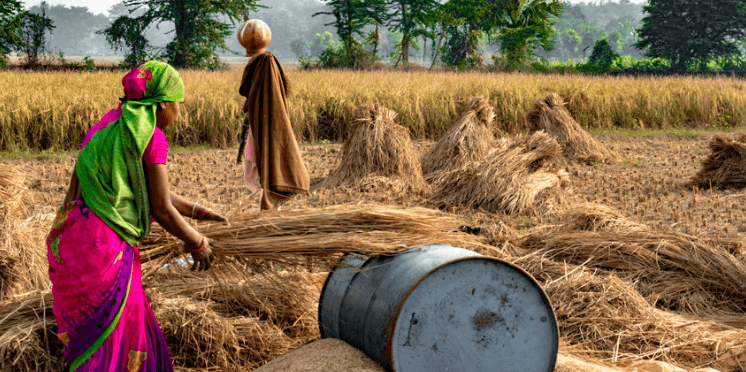By Vijay Jayaraj on Watts Up With That
One of the largest agricultural countries in the world, India, expects its highest summer crop production for 2021–2022.
This comes at a critical juncture when energy shortage crippled food production in China. The record numbers will play a critical role in maintaining global food security.
The record harvest also challenges claims that climate change will reduce global crop production.
For example, the Observer Research Foundation—an organization that is partnered by Apple, Bill Gates, Uber, Google, and Microsoft—says climate change threatens India’s food security. That assumes Indian agriculture is highly vulnerable to climate disasters.
But India’s agricultural production has been at historic highs recently, and it is projected to increase in coming decades due to increased rains from warming oceans.
Record Food Crop Production in Consecutive Years, Thanks to Monsoon Rains
For most of the farmers in India, the Monsoon rainfall is the lifeline, deciding between profit and loss. This year, the rains were normal in terms of the Long Period Average used as a yardstick.
Based on the rainfall amount, the Indian government has predicted the Monsoon food crop (plants sown during the summer season) production to exceed 150 million tons in crop year 2021–2022, a new all-time high.
Even if India receives moderate rainfall during the next few months, it will record its fifth consecutive annual increase in food grain output. Despite unpredictable rains, the country’s progressive improvement of year-on-year performance is a great boost to the economy and to global efforts to ensure food security.
Welcome Relief for the Country’s Poor and Marginalized
Paddy (rice) and pulses (lentils)—two key staple foods for India’s 300 million in poverty—are expected to be the largest contributors to this record production. For most people in India, a rice (or wheat) based food is accompanied by lentils and vegetables.
The government provides free (or highly subsidized) rice, wheat, lentils and sugar to the country’s 300 million poor, a program that picked up pace during the pandemic.
To feed these 300 million, and the other 1 billion people in the country, agricultural production is critical. The use of fertilizers, pesticides, insecticides, and efficient irrigation technologies have greatly improved crop production.
Inference on Current Climate Theories
Other major factors behind India’s remarkable agricultural success have been the introduction of gene-edited crops by Norman Borlaug in the 1970s, the increased atmospheric carbon dioxide (CO2) concentration levels, and the optimum temperature levels for plant growth.
Contrary to popular media claims, present CO2 concentrations and temperatures have helped plant growth—including food crops—globally, as attested by scientific studies.
So, the notion that climate change will disrupt global food crop production is false. If anything, climate change has aided plant growth and has been the perfect ally for farmers worldwide.
India’s case is not unique. Wheat production has reached historic highs in recent years globally. The United Nations Food and Agricultural Organization says wheat production will hit a record 780 million tons in 2021: “The world cereal production is also expected to rise by 1.9 per cent, lifted by higher-than-expected outturns reported for maize in West Africa, for rice in India, and wheat harvests in the European Union, Kazakhstan and the Russian Federation.”
Warming temperatures in no way endanger food production. Even if temperatures rise drastically, GM food crops capable of withstanding droughts are readily available to help. However, cold weather fronts pose a danger to plants globally. So thank God for global warming.
